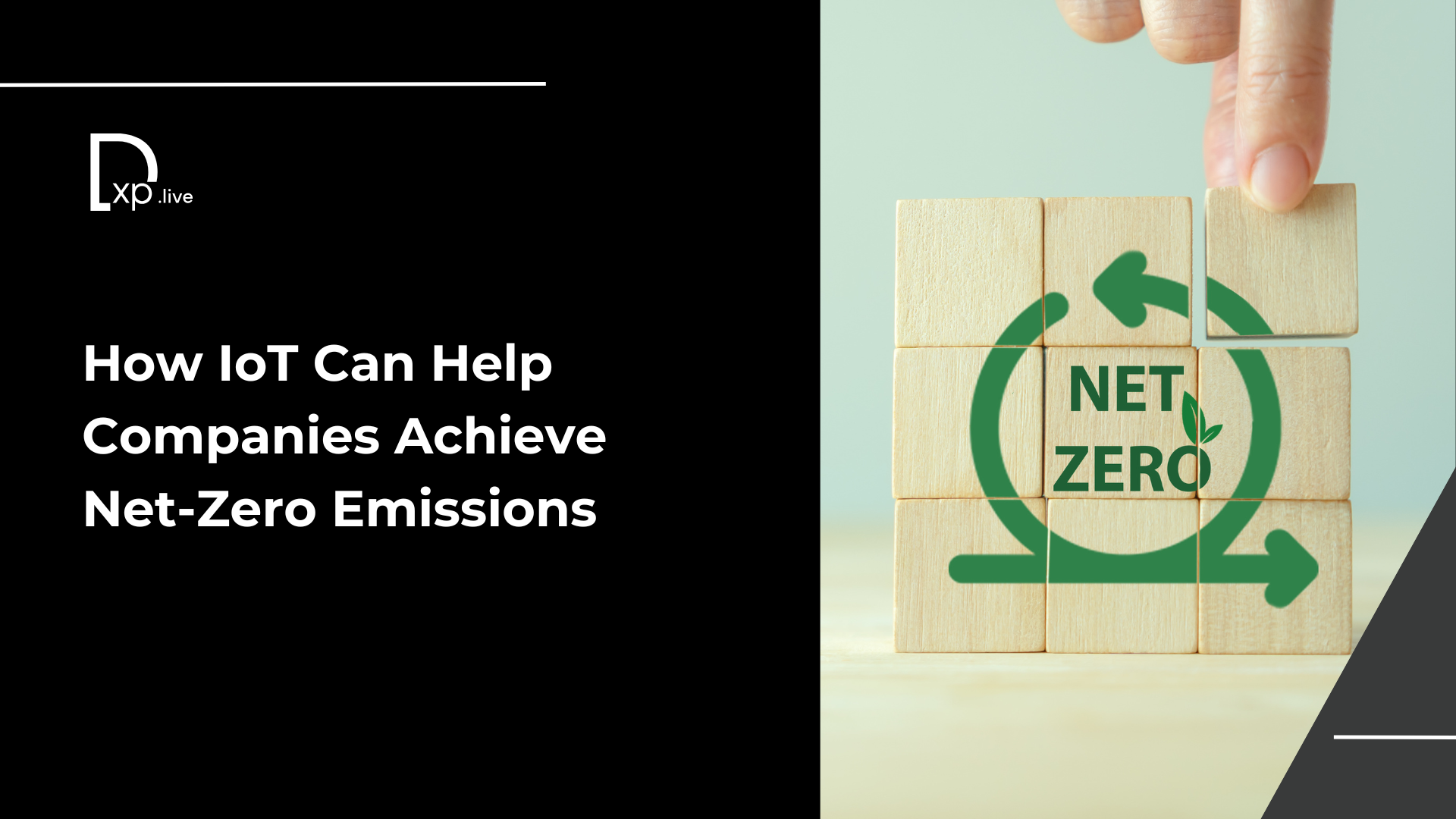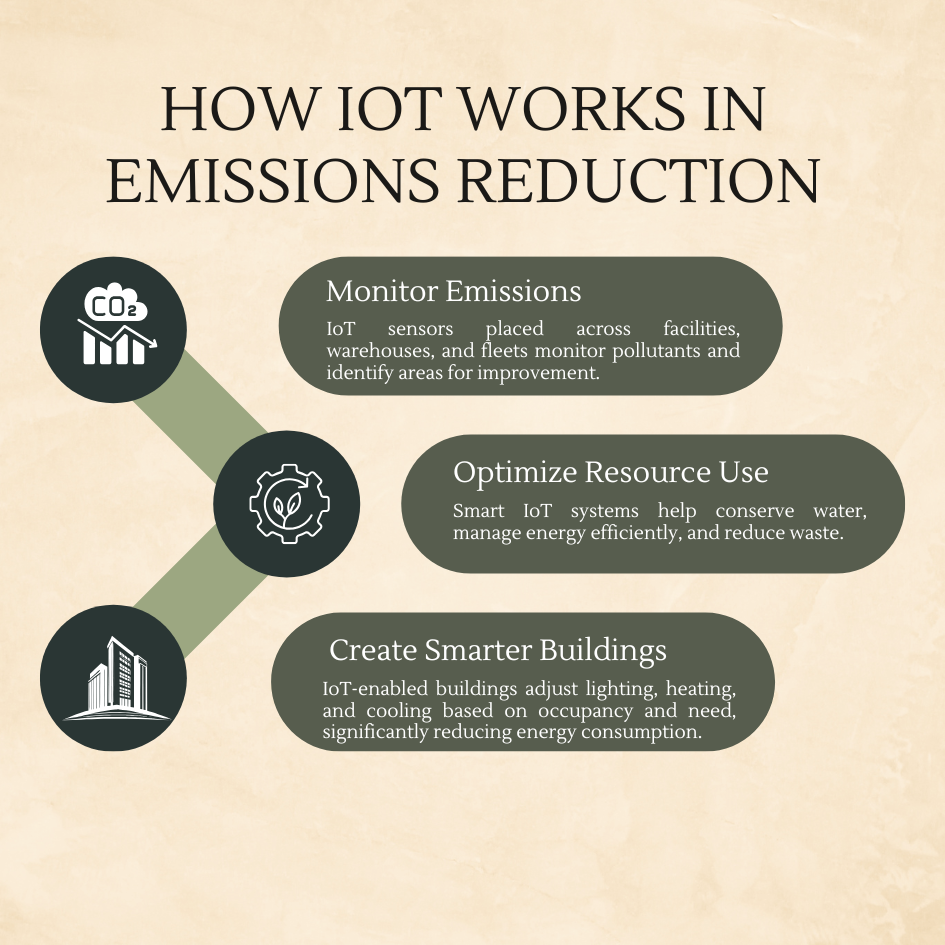How IoT Can Help Companies Achieve Net-Zero Emissions

As businesses worldwide face increasing pressure to reduce carbon emissions, the urgency to meet net-zero goals has never been more significant. However, a recent sustainability study commissioned by NTT and conducted by ThoughtLab Group highlights a harsh reality: while 68% of surveyed enterprises believe they are behind on their emissions targets, the true figure may be closer to 95%. This daunting statistic underscores the challenges companies face in tackling emissions reductions, which tend to follow an S-curve of progress—slow at the start, accelerating midway, and slowing again as they near their goals.
Despite these challenges, there is hope. The study reveals that a select group of companies, labeled as "leaders," are on track or even ahead of schedule in achieving their net-zero targets. The secret to their success? A combination of advanced technologies, particularly the Internet of Things (IoT), digital enterprise platforms, and innovative solutions like photonic networks.
The Critical Role of IoT in Sustainability Efforts
IoT, or the Internet of Things, is proving to be a game-changer for companies striving to meet their sustainability goals. Leaders in the NTT study demonstrated how IoT can be harnessed to monitor emissions, optimize energy use, and create smarter, more sustainable buildings. For instance, one U.S.-based technology company uses IoT sensors to monitor day-to-day electrical appliances across its operations, reducing its carbon footprint significantly.
How IoT Works in Emissions Reduction
IoT technologies enable businesses to gather real-time data on environmental factors such as emissions, energy consumption, and resource usage. This data empowers companies to:

- Track and Reduce Emissions: IoT sensors placed across facilities, warehouses, and fleets monitor pollutants and identify areas for improvement.
- Optimize Resource Use: Smart IoT systems help conserve water, manage energy efficiently, and reduce waste.
- Create Smarter Buildings: IoT-enabled buildings adjust lighting, heating, and cooling based on occupancy and need, significantly reducing energy consumption.
As predicted by the study, IoT could reduce global emissions by up to 63.5 gigatons by 2030 if aggressively spread through industrial sectors. Such a great figure further shows the transformative capacity of IoT in combating climate change.
IoT's Broader Business Benefits
While IoT’s impact on sustainability is undeniable, its benefits extend far beyond emissions reduction. Businesses leveraging IoT technologies also gain competitive advantages, such as:
- Enhanced Operational Efficiency: IoT optimizes supply chains, streamlines logistics, and automates routine processes, saving time and resources.
- Cost Savings: By reducing energy consumption and minimizing waste, IoT helps businesses lower operational costs.
- Improved Decision-Making: Real-time data insights enable better, faster decision-making across all levels of the organization.
- Customer Satisfaction: IoT enhances product and service delivery, offering personalized and seamless customer experiences.
For example, IoT-enabled fleets can monitor fuel usage and optimize routes, ensuring timely deliveries and reducing transportation costs. Similarly, in manufacturing, IoT sensors monitor machinery health, predict maintenance needs, and prevent downtime, saving costs and improving productivity.
The Role of Photonics in IoT and Sustainability
As IoT adoption accelerates, the supporting infrastructure must also evolve to handle the increased data demands. This is where photonics, a technology that uses photons instead of electrons for data transmission comes into play.
Photonics-based infrastructure offers ultra-fast, low-latency, and energy-efficient computing, making it a vital component of sustainable IoT systems. According to the NTT study, 25% of leaders are already using photonic networks compared to just 11% of followers.
Why Photonics Matters
Photonics transforms the internet—the backbone of IoT—by:
- Reducing Power Consumption: NTT’s All-Photonics Network aims to achieve 100x power efficiency compared to current systems.
- Increasing Data Capacity: Photonics boosts data transmission capacity by 125x, enabling seamless communication between IoT devices.
- Minimizing Latency: End-to-end delay is reduced by 1/200, ensuring faster data collection and analysis.
With photonics, IoT systems can provide real-time emissions insights crucial for AI-powered decision-making, further accelerating sustainability efforts.
Lessons from Leaders: How to Stay Ahead in Sustainability
The leaders identified in the NTT study share common traits that set them apart from their peers:
- Early Adoption of Advanced Technologies: Leaders are quick to embrace IoT, photonics, and digital twin computing, leveraging these tools to stay ahead of emissions targets.
- Integrated Sustainability Programs: They invest in dedicated sustainability teams and robust strategies that align with corporate goals.
- Collaboration and Innovation: Leaders foster partnerships across industries, sharing knowledge and resources to advance sustainability efforts collectively.
Key Takeaways for Businesses
For organizations striving to catch up on their emissions goals, here are some actionable steps inspired by the study:
- Invest in IoT Technologies: Start with simple IoT solutions like sensors for energy monitoring and scale up to more advanced systems as needed.
- Leverage Real-Time Data: Use IoT data to identify inefficiencies, track progress, and implement targeted interventions.
- Explore Photonic Networks: As IoT adoption grows, consider upgrading your infrastructure to photonics for greater efficiency and capacity.
- Foster a Culture of Sustainability: Integrate sustainability into your core business strategy, ensuring buy-in from all stakeholders.
- Collaborate Across Industries: Partner with other companies, industry groups, and governments to drive collective progress.
Looking Ahead
As global emissions targets become more stringent, the role of IoT in sustainability will only grow. Emerging technologies like AI and photonics will enhance IoT’s capabilities, enabling more precise data collection, analysis, and action. Businesses that adopt these tools early will not only contribute to a greener planet but also gain a competitive edge in an increasingly eco-conscious market.
However, no single solution will ensure success. Companies must adopt a holistic approach, combining advanced technologies with strong corporate policies, increased budgets, and dedicated sustainability teams.
Stay informed about the latest trends and technologies driving innovation by subscribing to our newsletter. Get exclusive insights, expert opinions, and actionable strategies delivered straight to your inbox.
Dive deeper into sustainability with our related blogs:
How Blockchain Drives Sustainability in Smart Cities
Click to uncover insights and stay ahead in the journey to a sustainable future!
FAQs
1. How can IoT help businesses reduce carbon emissions?
IoT enables businesses to monitor and optimize energy use, track emissions, and manage resources in real time. By identifying inefficiencies and implementing targeted improvements, companies can significantly reduce their carbon footprint.
2. What industries benefit the most from IoT in sustainability efforts?
Industries like manufacturing, logistics, retail, healthcare, and technology benefit greatly from IoT. IoT helps these sectors monitor operations, conserve resources, and achieve net-zero goals through smarter processes.
3. How does photonics complement IoT in achieving sustainability goals?
Photonics enhances IoT by providing faster, more efficient data transmission with reduced power consumption. This advanced infrastructure supports real-time data collection and analysis, enabling more impactful sustainability strategies.
4. What are some practical examples of IoT in action for sustainability?
Examples include IoT sensors in smart buildings to optimize energy use, IoT-enabled fleets for tracking fuel efficiency, and IoT devices in factories to monitor emissions and resource consumption.
5. Is IoT technology affordable for small and medium-sized businesses?
Yes, IoT solutions range from simple, cost-effective devices to advanced systems, making them accessible to businesses of all sizes. Starting small and scaling up as needed allows SMBs to benefit from IoT in a manageable way.




